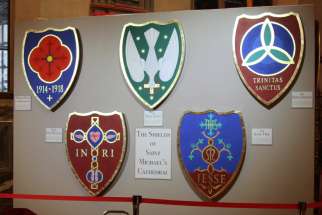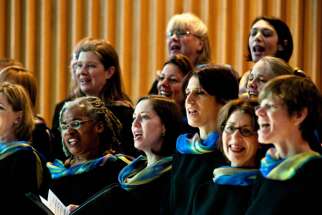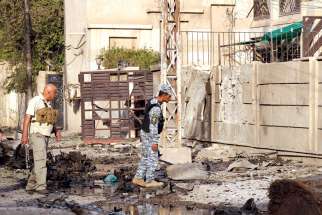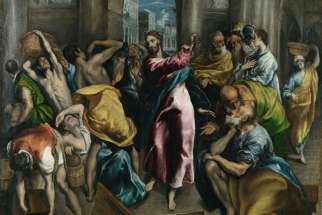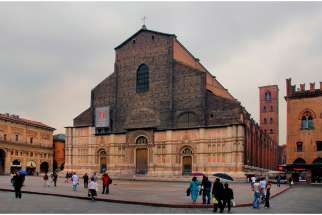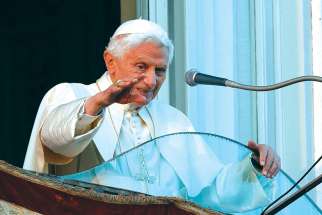B.C. government flip-flop on worship restrictions over Easter weekend frustrates faithful
VANCOUVER -- The 96-hour rollercoaster of emotions for Catholics gearing up for Easter this year ended on a low note.
God's Word on Sunday: Worship includes caring for the weak
Fifth Sunday in Ordinary Time, Feb. 9 (Year A) Isaiah 58:6-10; Psalm 112; 1 Corinthians 2:1-5; Matthew 5:13-16
Religious faith should not be confined to specific times and occasions. Genuine faith is a way of life and of being human.
Hearts, not just books, need to change to improve liturgy, Pope says
New Vatican body to take over Catholic charismatic activities
Cathedral shields a natural fit in Catholic worship
When Ruslana Makarenko was trying to think of how to design the 30 new shields that run along each side of St. Michael’s Cathedral, two things came to mind.
Catholic Book of Worship to get some fine tuning
What you sing and how you sing it on Sunday mornings is about to get a little more fine tuning. The Canadian Conference of Catholic Bishops has launched a search for hymns, songs, chants and Mass settings to include in a new national hymnal.
LONDON, Ont. - Every other year, student trustees from across Ontario meet in a designated city for a weekend of faith, fellowship and leadership development.
Praying for those not of this fold
An open letter to Roman Catholic bishops
Dear Bishops
I write to you as a loyal son of the Catholic Church, with a particular request: Could you make an addition to our eucharistic prayers to include an explicit invocation for other Christian churches and for those who lead them?
TORONTO - For almost 100 years in Toronto, thousands of Sunday worshippers have relied on Sunday only streetcar stops to help get them to church on time.
War on houses of worship
As I wrote last week from Jerusalem, just months after the massacre at a synagogue in Har Nof, an ultra-Orthodox Jewish neighbourhood, I felt a duty to make a visit, to pray for the dead and to offer, in a small way, solidarity with those who suffered the desecration of their house of worship.
Adding faith to climate conversation
Fossil Free Faith has launched a new program recruiting youth to lead the conversation in their faith communities about divesting in fossil fuel companies.
The weak before God will receive the power
Third Sunday of Lent (Year B) March 8 (Exodus 20:1-17; Psalm 19; 1 Corinthians 1:18, 22-25; John 2:13-25)
The Ten Commandments are often viewed as obsolete and out of touch with the modern world. They are unfortunately treated as if they were the 10 suggestions rather than commandments. Even those who use them as weapons in the culture wars of our times are sometimes hard-pressed to name all of them.
Two churches, two sacred places, two struggles
God has given us two churches, one is found everywhere and the other is found at select places. Some of us prefer one of these and struggle with the other, but both are sacred places where God can be found and worshipped.
Give a gift of Ratzinger's brilliance
The beginning of a new liturgical year is a suitable time to think about the liturgy in a broader and deeper way. Two recent books from Ignatius Press help us to do so in a devout and scholarly way. They are not for the casual reader, but parishioners looking to challenge their priests with some serious reading this Christmas would do well to consider them as gifts.
Revisit Taizé prayer
One evening this past summer, I walked down a set of dark stairs into a candlelit basement. I was with a group of 20 young adults. Eastern icons of Jesus on the cross were placed around the room, representing for me the sacred history of God’s interactions with His people.





